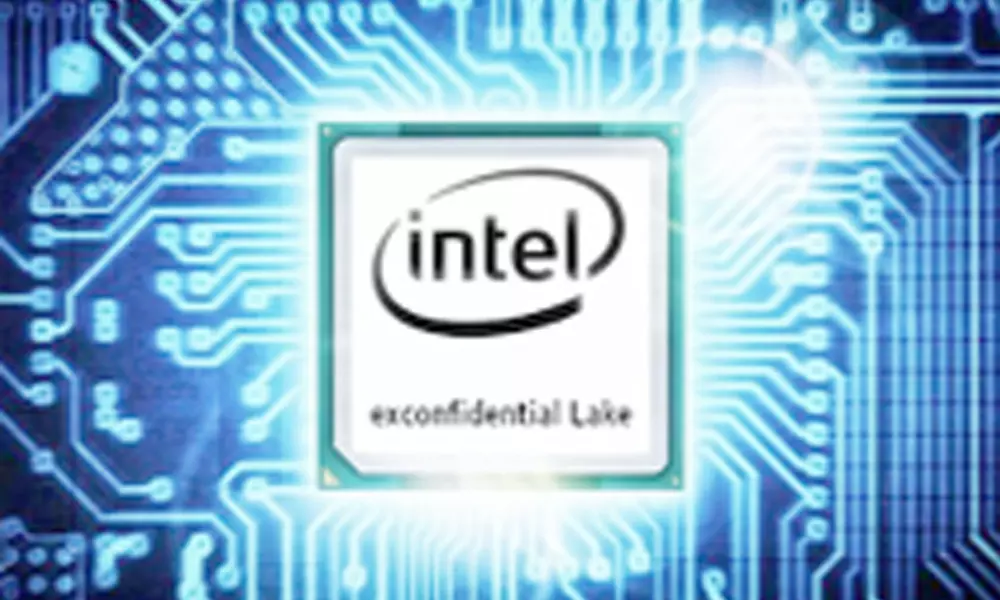A breakup plan will save tech major Intel Corp
Once the undisputed in the industry, it has fallen behind its Asian competitors
image for illustrative purpose

Intel Corp., a groundbreaker in semiconductors, has had a series of setbacks. Once the undisputed in the industry, it has fallen behind its Asian competitors in making state-of-the-art chips and its stock has badly lagged rivals. Now, with the help of prodding from activist investor Daniel Loeb, it is attempting a comeback.
On Wednesday, Intel announced that former Chief Technology Officer Pat Gelsinger will become its next chief executive officer, replacing Bob Swan effective next month. It's a smart move and brings engineering know-how to the top job just when Intel needs it. Foremost on his to-do list is figuring out a strategy for the company to regain technical leadership, which has for years been hobbled by manufacturing problems inside its facilities. These troubles aren't just a company-specific issue for an old Silicon Valley stalwart, though. There are much bigger implications, for both the US and technology industry alike - enough to warrant dramatic action.
Advanced chips are the key enablers of vital applications, from military defense systems to the cloud-computing services corporations use to run their businesses, so there's a strategic importance in ensuring reliable access to them. Intel is the only company with factories on US soil that can make such wares, but it has suffered from several delays in moving to newer chip production techniques. At the same time, the leading third-party chip foundry, Taiwan Semiconductor Manufacturing Co., has surged ahead in its technical capabilities for making higher-performing chips. With confidence in Intel's fundamental future waning, many of its biggest customers - including Amazon.com Inc. and Apple Inc. - are shifting to in-house chip designs and outsourcing manufacturing to Asia-based foundries.
This growing reliance on overseas companies for chipmaking is becoming a national security issue for the U.S. Three-quarters of global semiconductor production is based in East Asia. Nearly 40 per cent of new production capacity under development is in China, compared with just 6 per cent for the US, according to the Semiconductor Industry Association. Unless Intel can turn itself around, the trend is set to only accelerate. Already, chip production shortages at TSMC are forcing global automakers to cut car production this month. On Thursday, the Taiwan-based foundry said it will dramatically raise its capital spending this year to increase its capacity, but the bottlenecks point to the potential issue. Even Loeb referenced the ramifications for the country's security in a letter to Intel Chairman Omar Ishrak last month in which he called for the company to review all its options. I have a view on that.
For the good of Intel, and the US, a breakup may be the best way forward. Intel should separate itself into two companies - one for chip design and one for manufacturing. While Loeb didn't explicitly call for this option, I believe it would be the best way to guarantee long-term competitiveness for the company and the country. It is a playbook that has already worked for its rival Advanced Micro Devices Inc., which has thrived since spinning off its factories more than a decade ago. A laser-focused business model can be a powerful positive catalyst, breeding more efficiency and excellence. Further, it may help in hiring and retaining the best engineering and managerial talent in their respective categories.
Should Intel choose this path, it should be championed by the incoming Biden administration. Not only would it help maintain U.S. competitiveness in technology, but it would create highly skilled domestic manufacturing jobs and counter the rise of China. But for the plan to be truly successful, policy makers need take an active role. The government should bring together all leading U.S. technology and chip companies - including Amazon, AMD, Apple, Applied Materials Inc., Qualcomm Corp., and Nvidia Corp. - and convince them to partner with Intel's factory business. All the stakeholders need to recognize a viable, second-source domestic supplier is in their interest and would prevent the ascendance of an Asian chip-manufacturing monopoly.
Only then would the new company have the scale and diversity of clients to thrive.
Federal financial resources need to be contemplated as well. The SIA says China and South Korea have given roughly $50 billion and $7 billion to $10 billion in grants or subsidies over the last two decades, respectively, to support their chip-making industries. In comparison, the U.S. government has provided nothing. It should change course and offer whatever it takes to make sure domestic chip manufacturing can be competitive for decades to come.
Intel may try a smaller stopgap measure first. Many analysts expect the company to announce an outsourcing agreement for a small portion of its processor offerings to TSMC or Samsung, leveraging these companies' better chipmaking capabilities - at least for now. The company has told investors it will reveal its decision on using external manufacturing partners sometime this month. Last Friday, Bloomberg News reported Intel had discussions with the two top Asian companies but has yet to make a final determination. While I advocated for the move last July and it would help make some of Intel's lineup more competitive sooner, it's not a panacea. The main issue is that foreign foundries do not have the production capacity to take on the entirety of Intel's business. And of course, it would not fix the domestic chipmaking supply problem for the U.S. either.
That makes the full breakup the best course of action. It will be a long, difficult process and take several years before the U.S. can match its Asian competition. But the plan offers the highest probability for success in the long run. For something so important, failure is not an option. (Bloomberg)

